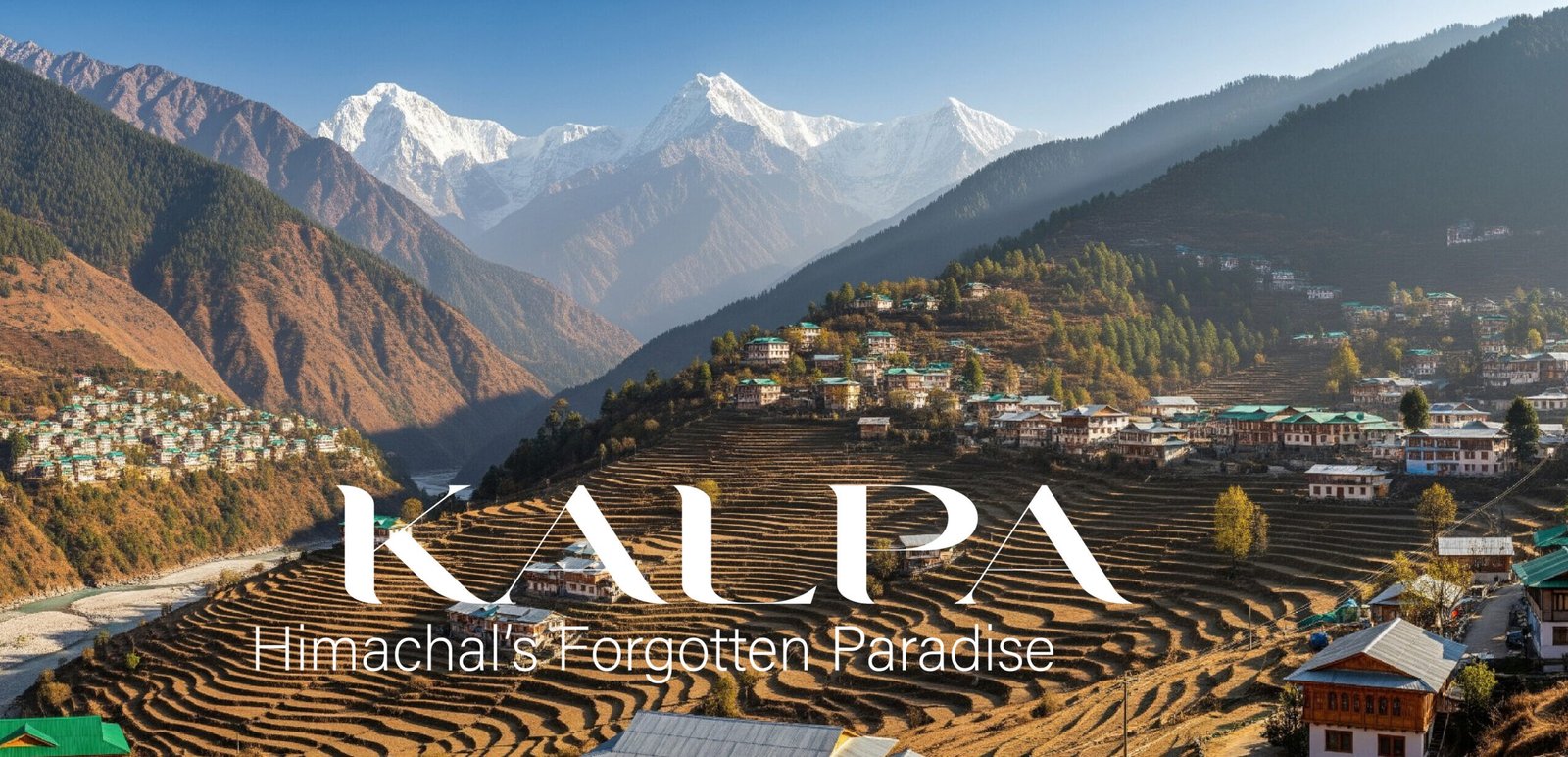Some journeys are planned. Others are answered calls from the mountains. My trip to Kalpa was the latter—a desire to explore a side of Himachal Pradesh far from the crowded circuits, a place that demands respect and rewards you with profound solitude. This is the story of a road trip from the chaos of Delhi into the heart of Kinnaur, a journey to a village that lives face-to-face with the gods, and a trek that healed a part of my soul I didn’t know was wounded.
For those planning to answer this call, here is a quick overview. The journey is a multi-day road trip, with a recommended overnight stop in Narkanda before tackling the challenging roads to Kalpa. The main reason to visit is the breathtaking, direct view of the Kinnaur Kailash mountain range. The key cultural experience is visiting the ancient Narayan-Nagin Temple, and for the adventurous, the offbeat Chaka Meadows trek is an absolute must.
The Road to the Gods: From Delhi to the Kinnaur Gate
The journey began with an early start from Delhi, leaving the city’s haze behind for the promise of mountain air. My first stop was Narkanda, a quiet town where I stayed the night to break the long journey. Witnessing the sunset from Hatu Peak that evening, watching the sky bleed orange over endless layers of Himalayan foothills, felt like the perfect prelude to the adventure ahead.
The next day, the real journey began. The road from Narkanda coils deeper into the mountains until you reach the famous Kinnaur Gate—a formidable archway cut into the rock, marking the entrance to one of the world’s most treacherous roads. Driving this road is a surreal mix of thrill and fear. On one side, a sheer rock face; on the other, a dizzying drop to the Sutlej river below. It’s a road that commands your full attention and respect, a fitting gateway to a sacred land.
Kalpa: A Village Living in the Shadow of Kailash
Arriving in Kalpa feels like stepping into a painting. This small village of just 1200 people, with its traditional Kinnauri homes made of wood and slate roofs, is dwarfed by the magnificent presence of the Kinnaur Kailash Range.
I checked into my homestay, Abhikes, and from my balcony, I had my first proper view. There it was—the sacred 80-foot Shivling peak, standing tall and serene. It’s a sight that silences you, demanding nothing but your awe.
The spiritual heartbeat of Kalpa is the ancient Narayan-Nagin Temple. Made entirely of wood and believed to be thousands of years old, it has a unique rule: one must wear a traditional Kinnauri cap to enter its sacred premises. Just next to this Hindu temple stands a serene Buddhist monastery. This beautiful coexistence is the essence of Kinnaur. As a local resident told me, his words echoing the valley’s spirit, “Hamare liye sab ek hi hai—hum Buddha bhi maante hain, Shiva bhi maante hain.” (For us, everyone is the same—we believe in Buddha, and we believe in Shiva too.)
The Chaka Meadows Trek: A Climb into Solitude
Most travelers see the view from Kalpa and leave. But to truly experience this place, you must trek to Chaka Meadows. The trail, a 5-6 km uphill climb from the village, is a journey in itself. There are no clear markers; you follow a shepherd’s trail that crosses a glacial stream and winds through alpine meadows.
After a few hours of climbing, I reached the meadows at around 12,000 ft. The world disappeared. The air was thin, crisp, and utterly silent. Patches of snow remained even in May. I was the only person there. No tourists, no noise—just snow, clouds, and the silent, watching mountains. It was a moment of profound, healing solitude. Kalpa didn’t just welcome me; it cleansed me.
A Traveler’s Guide to Kalpa and the Chaka Trek
- Plan Your Stay: Book a homestay with a clear, mountain-facing view. Waking up to the sight of Kinnaur Kailash is the primary experience. I highly recommend Abhikes Homestay.
- Respect the Road: The road to Kalpa is challenging. Travel during the day, have an experienced driver, and be prepared for potential delays.
- Chaka Trek Essentials:
- Start Early: Begin your trek by 8 or 9 AM to ensure you have enough daylight to return.
- Carry Supplies: There are no shops or water sources on the trail. Pack at least 2 litres of water, snacks, and energy bars.
- Wear Layers: The weather can change instantly. Wear multiple layers that you can add or remove.
- Cultural Etiquette: Always be respectful at temples and monasteries. The Kinnauri cap rule at the Narayan-Nagin temple is a beautiful
tradition to honour.
A Final Reflection
You can see a hundred stunning pictures of the Himalayas, but nothing prepares you for the feeling of standing in a place like Chaka Meadows, utterly alone and completely at peace. Kalpa is more than just a beautiful village; it’s a sanctuary. It’s a reminder that sometimes, the most challenging journeys lead to the most serene destinations, and the most profound experiences are found far from the beaten path, in the quiet company of the gods.

Leave a Reply